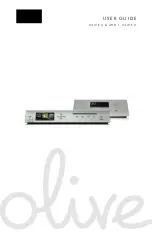
Additional information
09
33
En
English
Français
Deutsch
Nederlands
Italiano
Español
Screen sizes and disc formats
DVD-Video discs come in different screen
aspects, ranging from TV programs, which are
generally 4:3, to CinemaScope widescreen
movies
1
, with an aspect ratio of up to about 7:3.
Televisions also come in different aspect
ratios; ‘standard’ 4:3 and widescreen 16:9.
2
TV system setting
The default setting of this system is
AUTO
, and
unless you notice that the picture is distorted
when playing some discs, you should leave it
set to
AUTO
. If you find picture distortion with
some discs, set the TV system to match your
country or region’s system. However, this may
restrict the kinds of disc you can watch. See
the table for the kinds of discs compatible with
each setting (
AUTO
,
PAL
and
NTSC
).
3
1
Switch the unit into standby, then press
SHIFT+SYSTEM SETUP
.
2
Press
ENTER
.
The display briefly shows
WELCOME
and then
the new TV system setting,
AUTO
,
NTSC
or
PAL
. The player then switches on.
If you need to switch the TV system setting
again, switch the player into standby and
repeat the process.
Note
1 Many widescreen discs override the system’s settings so that the disc is shown in letterbox format regardless of the setting.
Set to 4:3 (Letter Box), widescreen
discs are shown with black bars top
and bottom.
Set to
4:3 (Pan&Scan)
, widescreen
discs are shown with the left and right
sides cropped. Although the picture
looks larger, you don’t actually see
the whole picture.
2 • Some movie aspect ratios are wider than 16:9, so even with a widescreen TV, these discs will still play in a ‘letterbox’ style.
• Using the
16:9 (Wide)
setting with a standard 4:3 TV, or one of the
4:3
settings with a widescreen TV, will result in distortion.
• When you watch discs recorded in 4:3 format, you can use the TV controls to select how the picture is presented. Your TV
may offer various zoom and stretch options; see the instructions that came with your TV for details.
3 Most models of the newly developed countdown PAL TV system detect 50 Hz (PAL)/60 Hz (NTSC) and automatically switch
vertical amplitude, resulting in a display without vertical shrinkage. However, in some cases, the image may appear without col-
or. If your PAL TV does not have a V-Hold control, you may not be able to watch NTSC discs because of picture roll. If the TV has
a V-Hold control, adjust it until the picture stops rolling. On some TVs, the picture may shrink vertically, leaving black bands at
the top and bottom of the screen.
Disc
Player setting
Type
Format NTSC
PAL
AUTO
DVD/Super VCD/
Video CD/DivX
Video
NTSC
NTSC
PAL
NTSC
PAL
NTSC
PAL
PAL
CD/MP3/WMA/
JPEG/no disc
—
NTSC
PAL
NTSC or
PAL
XV-DV232.book 33 ページ 2004年12月24日 金曜日 午後1時59分
















































